Köln (Cologne) is a vibrant city along the banks of the Rhine River that has rich historical roots, impressive museums, a World-famous Cathedral, its own special beer, and a hearty local fare that combine to make this a very rewarding travel destination. Cologne was founded by the Romans 2,000 years ago, so it is one of the oldest cities in Germany. It has grown to become the largest city in the North Rhine-Westphalia state of Germany and fourth largest in the country. With its setting on the Rhine, it has become one of Europe’s most important inland ports.
I remember with pleasure having visited Cologne and standing in awe in front of its enormous cathedral. Cologne offers up an interesting Old Town and as a fan of good German food, enjoyed its special beer along with its hearty fare and even special museums devoured to its chocolate and mustard making industries. Cologne also makes a good base for further explorations along the Rhine River.
Cologne has had to remake itself, as much of old Cologne was flattened by WWII bombing. The magnificent Cathedral escaped destruction, but the medieval Old Town and Cologne’s 12 Romanesque churches that marked it as an important pilgrimage site had to be rebuilt.
The chief object of any visit is the huge Cathedral, which houses the Three Kings shrine, the main object that caused Cologne to grow in importance as a medieval pilgrimage center. There are also a dozen additional Romanesque churches that were also built in response to the wave of pilgrims that came to Cologne to venerate the local shrines.
The city’s cultural riches include a great collection of museums, including the array of old masters at the Wallraf-Richartz and the Picassos and Pop Art on view at the Museum Ludwig. The artistic treasures of the Middle Ages can be seen in collections at the Schnütgen Museum.
A stroll through Old Town is a trip back in time last lovingly rebuilt buildings from medieval times, museums, churches, the Cathedral itself, the impressive City Hall or Rathaus, and many shops, cafes, and restaurants in historic settings. And Cologne can even claim in its heritage the birthplace of eau de Cologne perfume!
Check out the views of the metropolis by ascending the steps of the Cathedral or walking across the Hohenzollern Bridge. Or take a ride over the river on the city’s cable car!
But there is much in the modern city to find appealing as well, with musical performances at the city’s opera house and concerts at the Philharmonic, and shopping excursions in the trendy Belgian Quarter.
Food and drink are important elements of any trip, and Cologne offers up its own Kölsch beer, plus satisfying, rib sticking German fare. There are even museums centered around important edibles like mustard and chocolate!
In normal non-COVID times the city celebrates with its own boisterous Carnival celebrations in February, and some of the best Christmas markets in Europe around the year-end holidays.
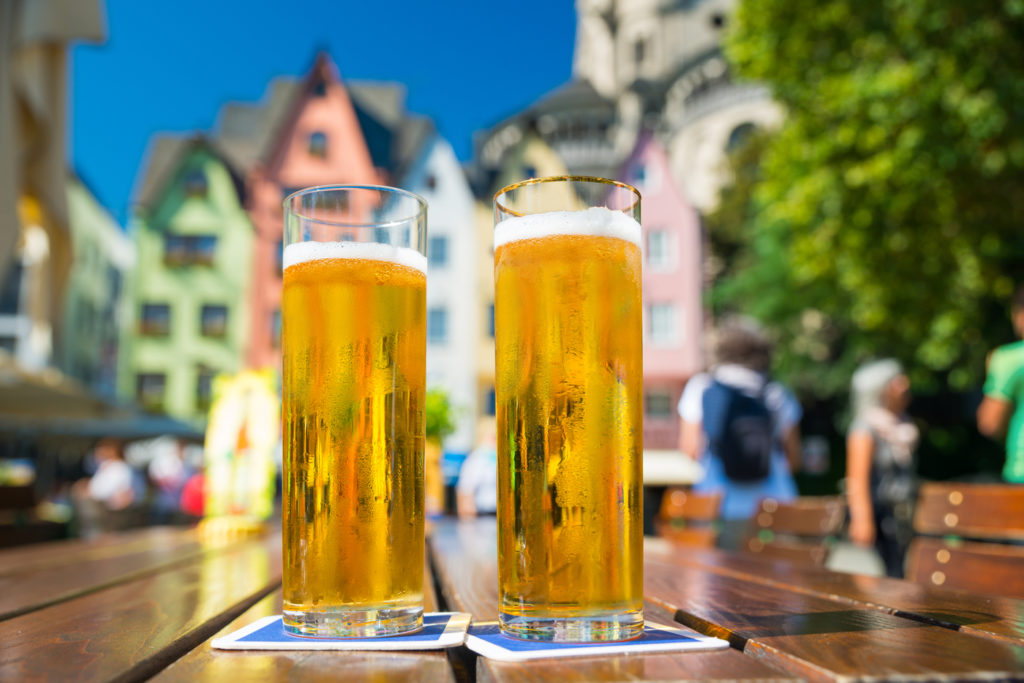
The Cologne Card
If you plan on visiting several days and checking out many of the city’s best museums, Cologne offers its Cologne Card for visitors, which provides free bus and train transportation plus discounts of 20-50% at local museums and 20% off Rhine River harbor cruises. An individual card costs 9 euros for 24 hours and 18 euros for 48 hours.
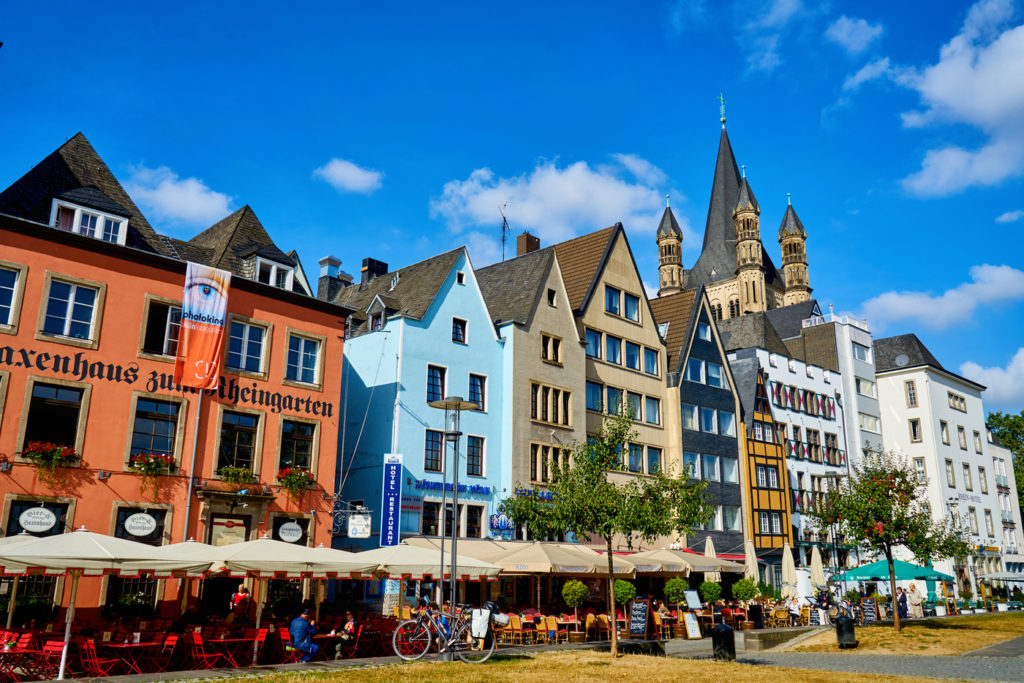
City Walking Tours
Although it’s easy to check out the city’s best sights on your own, to get the most of your visit and learn about Cologne’s history is with the help of a local guide. There are walking tours available such as this 2-hour City highlights tour for $13.57 per person or a 90-minute guided tour of Old Town also priced at $13.57 per person.
Admiring Cologne’s Cathedral and Historical Churches
Cologne was a major pilgrimage center in the Middle Ages, as religious travelers came to venerate the relics the city’s cathedral and churches hold. It was renowned for its twelve Romanesque churches, and for its impressive cathedral. Here are the top churches to seek out.
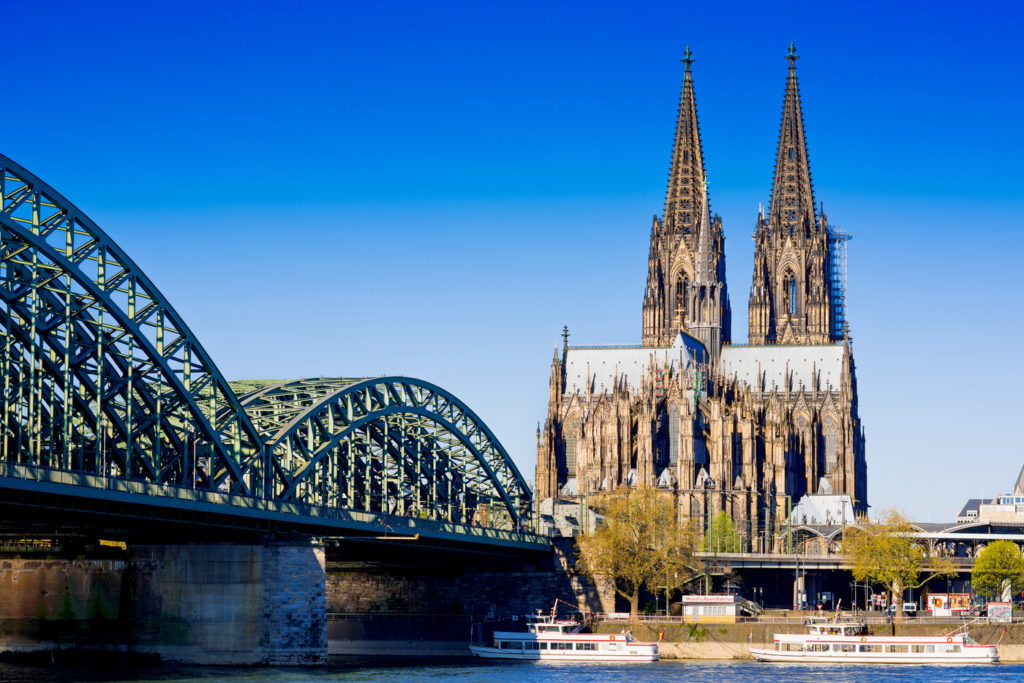
Cologne Cathedral
You can’t help but spot this impressive building in Cologne’s skyline, perched near the banks of the Rhine River. Cologne’s gorgeous Gothic Cathedral is one of the most impressive religious structures in the world. It was begun in 1248 and completed over six hundred years later in 1880. At the time it was finished, it was the tallest structure in the World, later to be surpassed in 1884 by the Washington Monument. In recognition of its importance, the Cathedral was added to the UNESCO World Heritage Site in 1996.
The reason for the church’s existence was to create the appropriately grand structure to house the Tomb of the Three Kings, which is said to contain the crowned skulls and clothing of the Three Wise Men who visited Christ at his birth. These artifacts were stolen by the Holy Roman Emperor Frederick Barbarossa in Milan and given to the archbishop in Cologne in 1164.
The golden sarcophagus that is the shrine to the Three Kings is contained in a glass case in the cathedral’s choir and dates to the end of the 12th century. The choir also contains beautifully carved oak stalls and medieval statuary. A chapel on the north side of the choir houses the Gero Cross, a crucifix carved in the late 10th century, and reputedly the oldest in the western world. One more top artistic highlight is Stephan Lochner’s 1445 altarpiece, “Adoration of the Magi” found on the south side of the choir.
In addition to the shrine, the cathedral has marvelous stained-glass windows. It is amazing that these treasures survive, as the city surrounding the cathedral was leveled in WWII, yet the towers remained standing, and the interior portions that were destroyed were rebuilt.
The cathedral twin towers reach over 500 feet into the sky. For some of the best views of the city, you can climb the over 500 steps of the cathedral’s south tower for a sweeping panorama of the city, Rhine River, and surrounding area. The entrance to the tower is to the right of the main entrance. The Treasury houses other Church relics from the Middle Ages. Its entrance is to the left of the main entrance to the cathedral.
There is no admission fee to enter the cathedral.
To learn more about the history of the Cathedral, take a 3-hour guided tour of the Cathedral plus Old Town for $23.74 per person.
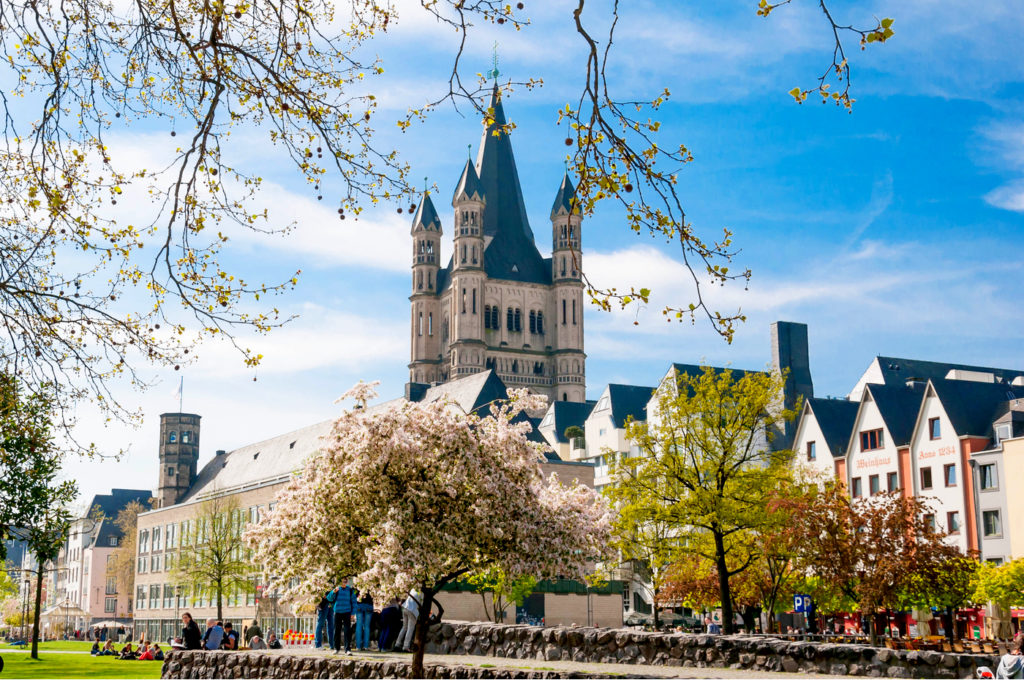
Cologne’s Romanesque Churches
As an important pilgrimage center, Cologne was the site of a dozen important Romanesque churches, all built within its medieval city walls. Because of the pilgrimage traffic generated by those wanting to venerate the relics of the Three Kings in the Cathedral, these churches were important destinations as well, as most featured relics of Christian martyrs. All twelve churches were badly damaged during the second World war, but all were later rebuilt or restored.
Great St. Martin is considered the most beautiful of Cologne’s twelve Romanesque churches, built between 1150 and 1250. It joins in the grouping of sights along the Rhine with the Cathedral and the colorful Old Town houses to create a great panorama along the river. The church was built atop a 10th century Roman chapel.
The Church of St. Ursula, the patron saint of Cologne, was built in the 12th century atop a Roman graveyard. St. Ursula was, according to legend, martyred here with her 11,000 virgin companions in 451. Pilgrims were inspired by the story to visit, and see the relics included in the shrine room of St. Ursula, featuring sculpted wooden busts in niches and the ceiling and upper walls ornamented with bones.
Twin-towered St. Gereon contains the tombs of St. Gereon and other martyrs, and its crypt contains 11th-century mosaics.
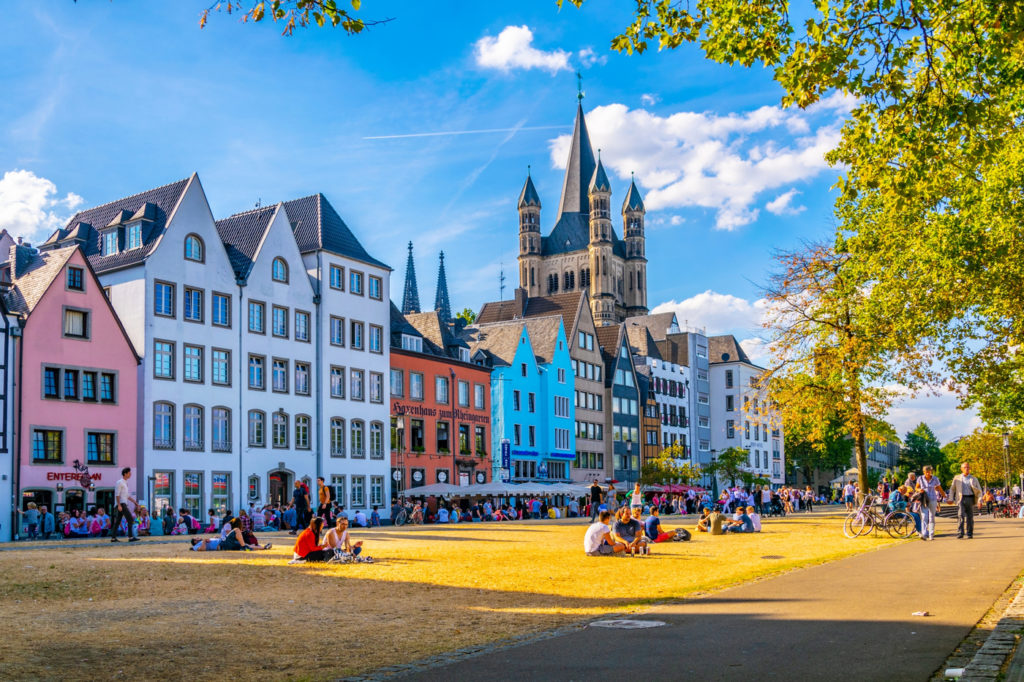
Visit its Picturesque Old Town
Cologne’s Old Town is the city’s historic heart. Here you’ll find many of the most famous historical structures like the cathedral, the Romanesque churches, the City Hall, and its most important museums. In addition, visitors will discover colorful houses, cafes, shops, and restaurants set along picturesquely along cobbled streets.
I find this to be the most atmospheric part of the city, and an area you’ll want to spend time in to soak in the ambiance and enjoy some of the best local color and cultural institutions the city has to offer. In addition to the museums, here are a couple other important historical places to look for on your travels around the Old Town.
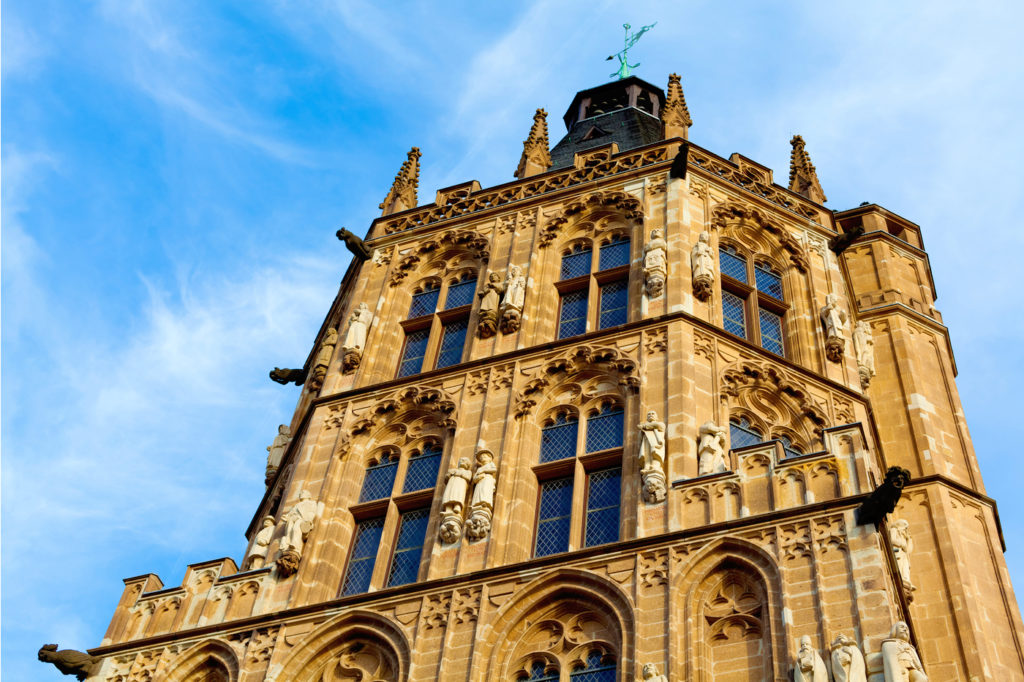
Cologne’s Town Hall (Rathaus)
One of the most interesting buildings in Old Town, the Town Hall features an interesting combination of architectural styles as part of its 900-year-old history. This makes it the oldest such building in Germany. The main building dates from the 14th century, the tower from the 15th, and the loggia and cloister from the Renaissance era.
City Hall highlights include the Hanseatic Hall with its Gothic figures of eight prophets, the nine “good heroes” (Christian, Jewish, and pagan), and its glockenspiel of 48 bronze bells that plays several times each day.
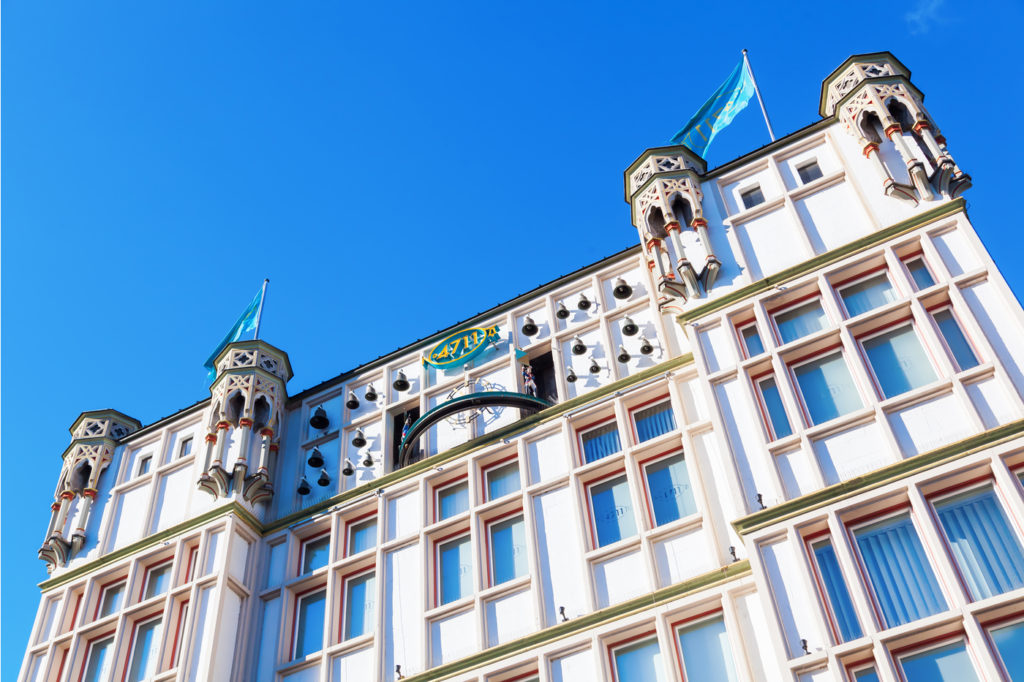
House of Fragrances 4711
Cologne boats another historical first, the creation of Eau de Cologne perfume in the 1700s. House of Fragrances 4711 is the birthplace of Eau de Cologne and modern perfume. 4711 was the house number of the perfume factory at Glockengasse where the perfume was first made. At the entrance of the shop, there is a fountain filled with perfume that you can dip your hands into.
Delve into its Eclectic Museums
Cologne offers a wealth of museums, one of the top cultural aspects of the city, and some of the best things to see on any visit. The museums cluster conveniently, with most located in the picturesque Old Town. Here are the best of the best.
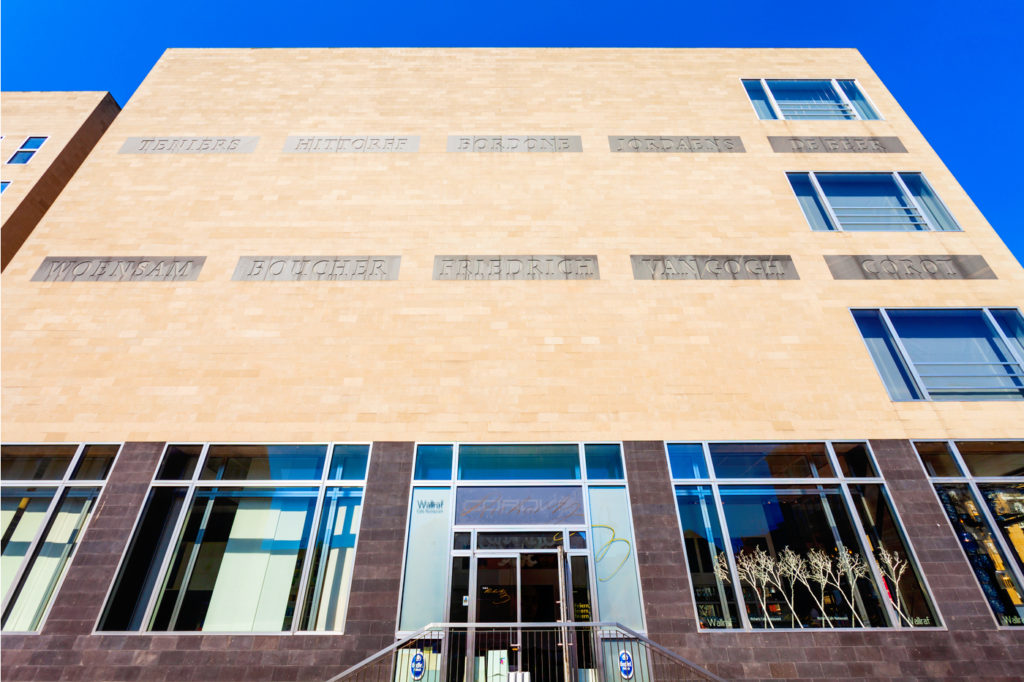
Wallraf-Richartz Museum
Founded in 1861, the outstanding Wallraf-Richartz museum has a collection of art that spans from the Middle Ages to the late 19th century. The medieval Cologne school paintings from the mid 1300s to mid 1500s are a strong point of the museum’s holdings. These paintings and altarpieces often depict legends from the lives of martyred saints like St. Ursula.
Other highlights include works by German masters such as Lucas Cranach andAlbrecht Dürer, and Flemish artists like Rembrandt and Rubens. The 19th century collection features such luminaries as Edvard Munch, Renoir, Monet, and Van Gogh.
The admission fee is 8 euros.
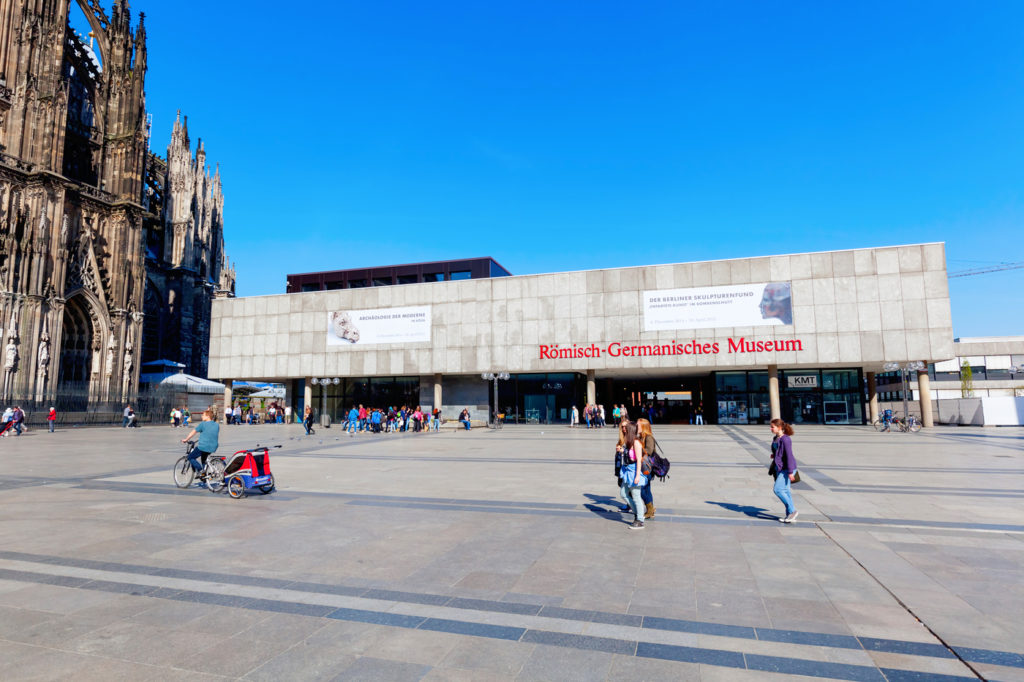
Roman-Germanic Museum
Cologne was originally founded as a Roman city, and the Roman-Germanic Museum explores this interesting past and the daily lives of the Romans. The museum itself was built in 1974 on the site of a Roman villa, and you can still see its remains in the museum’s basement. The archaeological items on display range from the Paleolithic period to the early Middle Ages. The museum is in the Old Town, situated next to the cathedral.
Some of the most interesting exhibits include the 2nd century Dionysus Mosaic and the nearly 50-foot-tall funerary monument of Poblicius from the 1st century, both discovered during city excavation works. The museum also features collections of Roman glass, pottery, sculpture, and jewelry. Note that certain sections may be closed due to Covid restrictions, so please check in advance of any visit.
The admission fee is 6 euros.
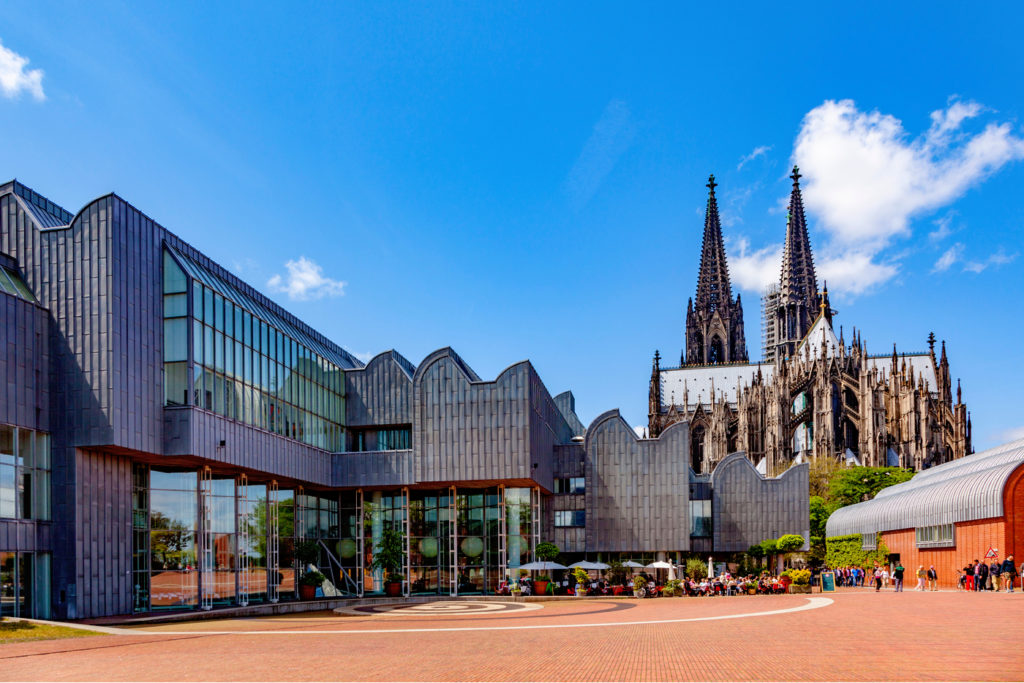
Museum Ludwig
Museum Ludwig presents a large collection of 20th and 21st century art, with one of the largest Picasso collections in Europe, second only to the museums in Barcelona and Paris. It also has an especially good representation of American pop art by top artists like Roy Lichtenstein and Andy Warhol, plus Abstract, Expressionist and Surrealist painters.
The museum also houses the Agfa-Historama, tracing the history of photography with work by all the great masters of this artistic medium. The collection of historic photographs is the largest in the world.
The admission fee is 11 euros.
More Museums if you have Additional Time
Schnǖtgen Museum
The Schnǖtgen Museum focuses on medieval and Gothic sacred art and the building is unique, incorporating the former Romanesque church of St. Cecilia, whose large open space provides an appropriate atmosphere for the art on exhibit.
Visiting the Schnǖtgen shows what an artistic flowering there was in Cologne during the period when the cathedral and the Romanesque churches were built. The abundance of construction projects brought an array of skilled artisans to do the wood and stone carving, the paintings and stained glass, to support the artistic enhancements of these pilgrimage sites. Here you’ll find beautiful examples of sculptures, wood carvings, goldsmith work, and textiles from the 12th to the 16th centuries.
The admission fee is 6 euros.
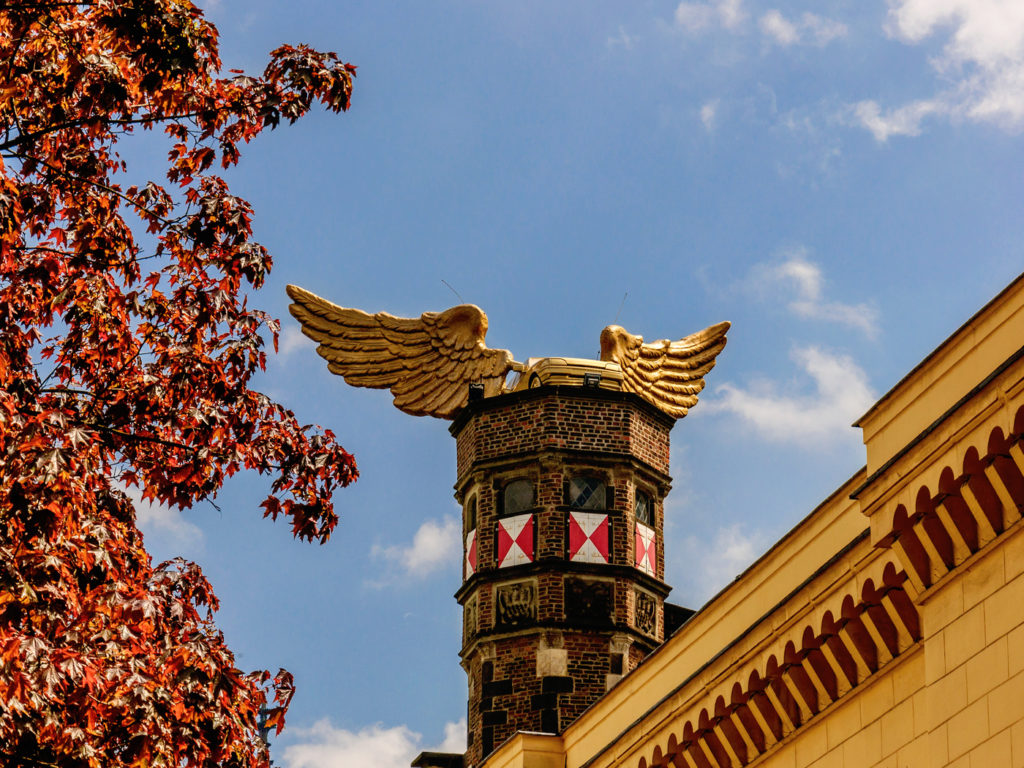
Cologne City Museum
The City Museum relates the fascinating story of Cologne’s 2,000-year history. Learn about such things as the local beer, Kölsch, the discovery of eau de Cologne right here in this city, the Carnival celebrations and much more about the daily lives of those who have lived here from the Middle Ages up to the present.
The admission fee is 5 euros.
Käthe Kollwitz Museum
This museum presents the works of Käthe Kollwitz, a 20th century Berlin born female artist who is well known for her sculptures and drawings depicting the sufferings brought on by war and hunger. The pieces are dramatic and touching and can arouse strong feelings about the emotions she has tried to depict.
The admission fee is 6 euros.
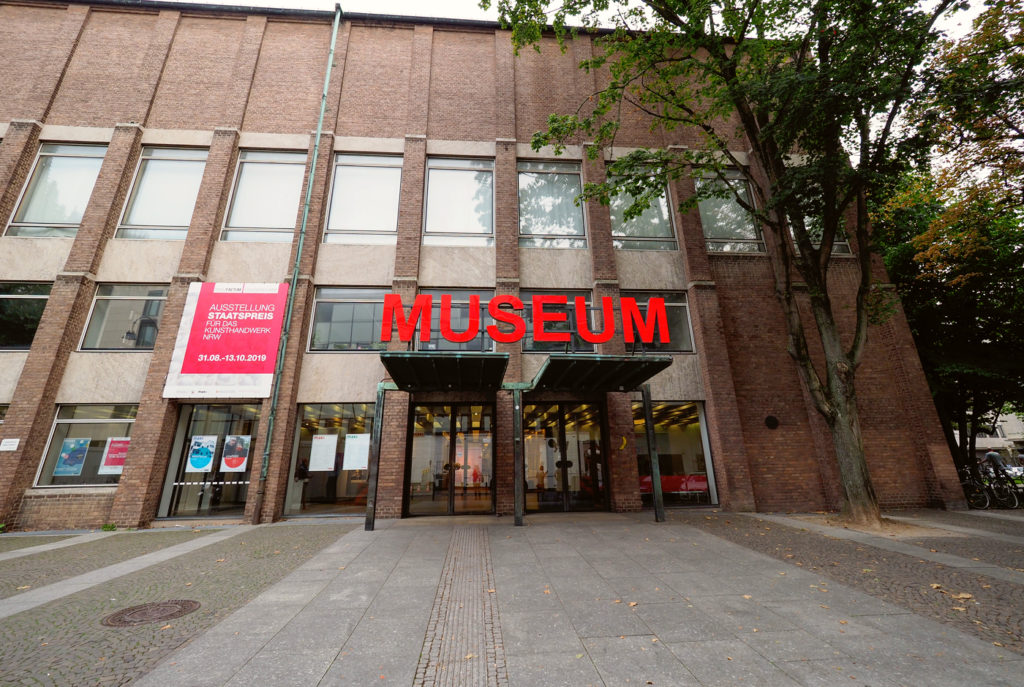
Museum of Applied Art
The Museum of Applied Art (MAKK), founded in 1888, offers an excellent collection of decorative arts including furniture, jewelry, crafts, porcelain, and even arms and armor. Here you’ll find rooms and furniture by such famous architects as Alvar Aalto from Finland and the German Mies van der Rohe.
The admission fee is 4 euros.
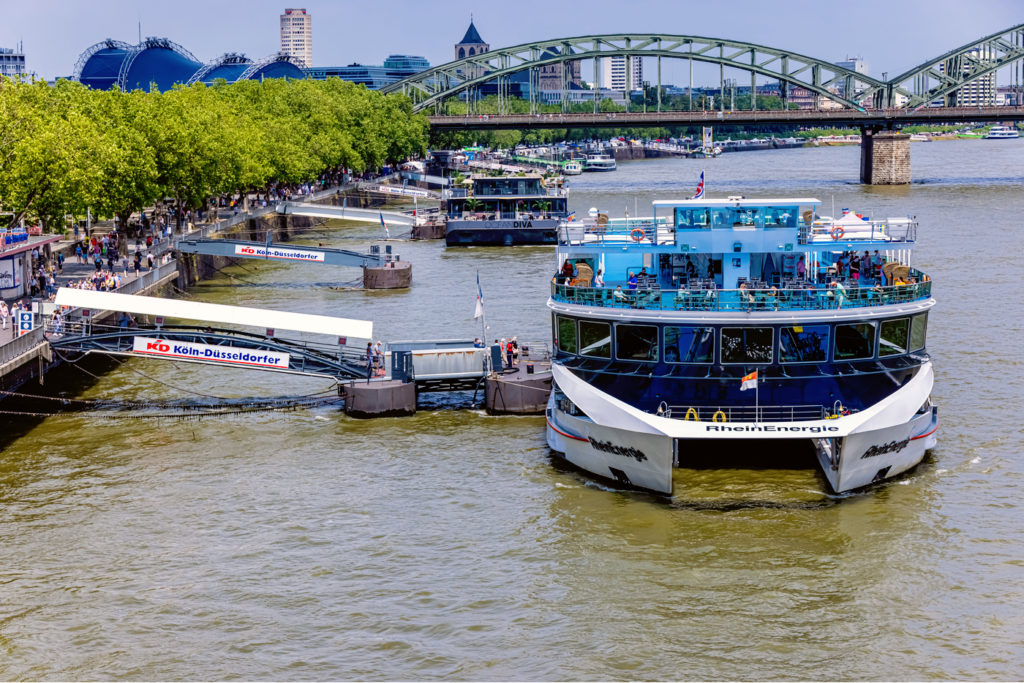
Take a Boat Ride
With the Rhine River cutting through the heart of the city, a boat ride is a great way to get a different perspective on Cologne while enjoying wonderful views of its Cathedral and Old Town set along the river’s banks.
There are one-hour panorama cruises that give you a look at the heart of the city. Granted that the Rhine here is more industrialized than in other more famous stretches of the river, it still can be an enjoyable way to see the riverside aspects of downtown and its beautiful churches and historic buildings. You’ll get riverside looks at the Hohenzollern Bridge, colorful Old Town houses, and the modern buildings of the harbor district. There are also nighttime cruises and other themed trips, so check out the schedule to see what appeals to you most.
Check out Cologne’s Best Viewpoints
Break out your camera as you look for these best vantage points to take in the Cologne city skyline.
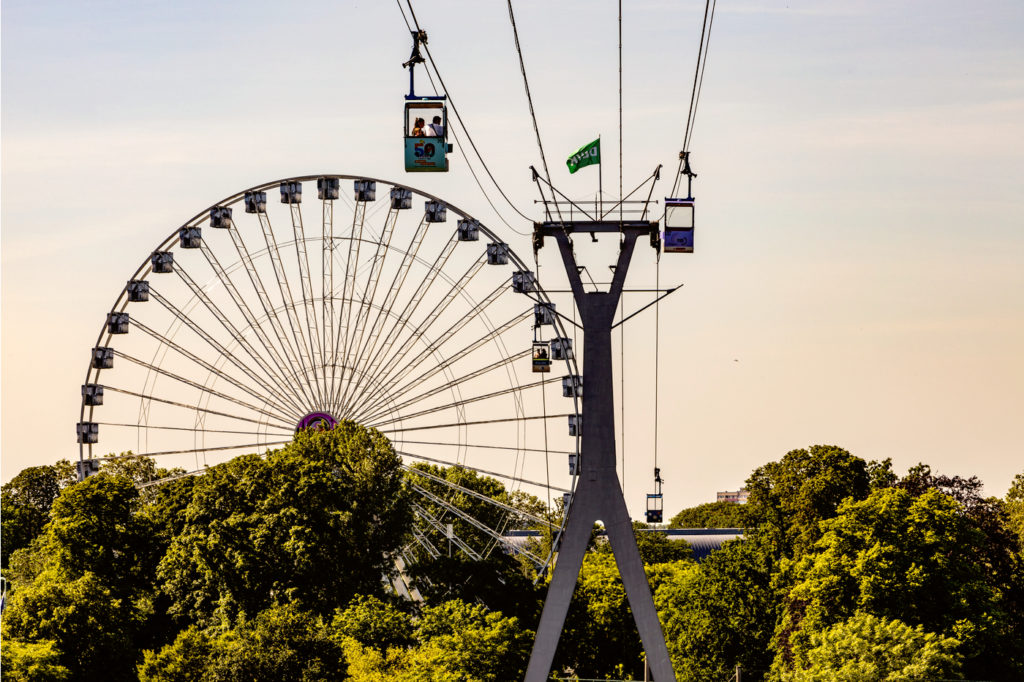
Rhine Cable Car
For a unique perspective on the city, take a ride on the Rhine cable car. Opened in 1957, it is the first and only European cable car to cross a river. The cable car connects the Cologne Zoo with the Rhine Park. You can choose to take a round trip excursion, or just a one-way trip, enabling you to walk back alongside the other riverbank. It’s a 15-minute ride each way.
The cost of the ride is 4.80 euros for a one-way ticket or 7.50 euros for a round trip.
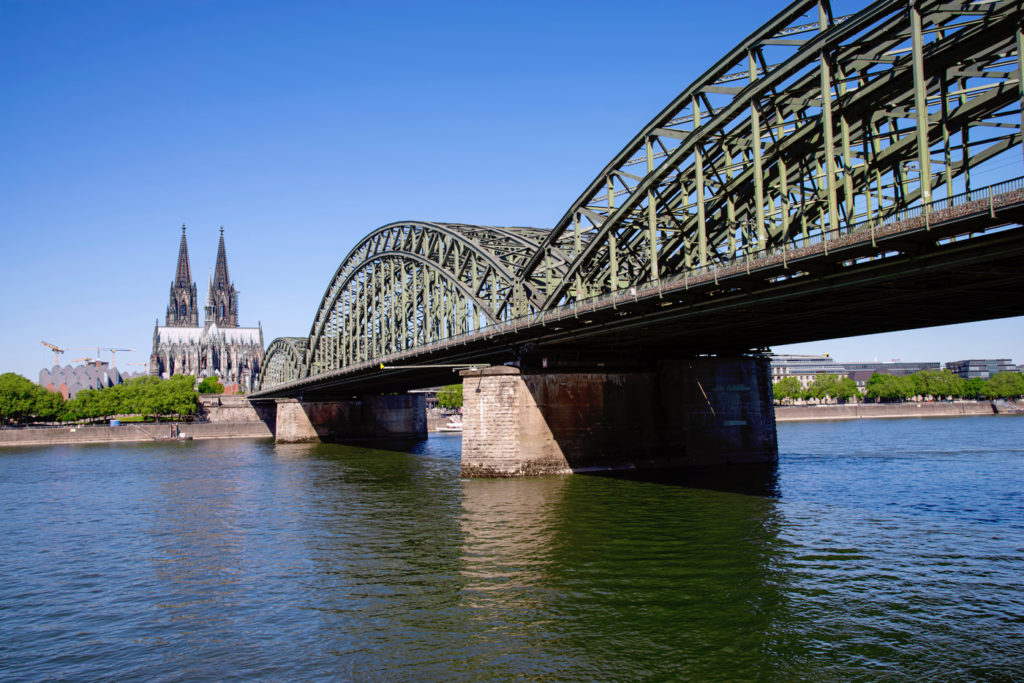
Hohenzollern Bridge
The Hohenzollern Bridge was originally built between 1907 and 1911. It survived Allied bombs in WWII only to be destroyed by the Germans themselves to prevent entry into the city across the Rhine. It was rebuilt after the war, and today carries rail traffic as well as having a pedestrian walkways and bicycle paths on either side.
The main reason for its inclusion here is the views of the Cathedral you can have by crossing the bridge. Couples have also made the bridge their own by adding so-called love padlocks across the bridge. These padlocks have been removed in other European cities for the extra weight they create for the bridge to bear but remain a part of Cologne’s bridge.
Take a Break in Relaxing Parks
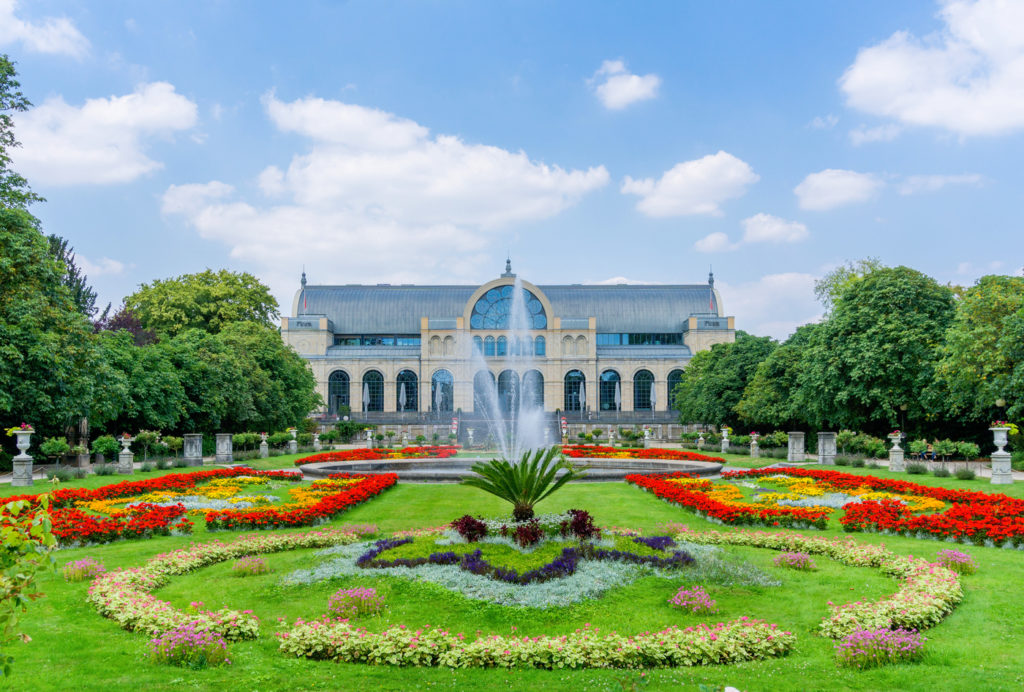
Flora and Botanical Garden
Lovers of plants and gardens won’t want to miss a visit to the Flora and Botanical Garden, next to the Zoo. Here you’ll find almost 10,000 varieties of plants and trees on display, plus a cactus house and Palm House along with tropical and subtropical displays. The garden stretches over nearly 30 acres and is a great break from your city sightseeing schedule. The Flora is a historic building that hosts special events and concerts.
Entrance is free.
Explore interesting Neighborhoods on Foot
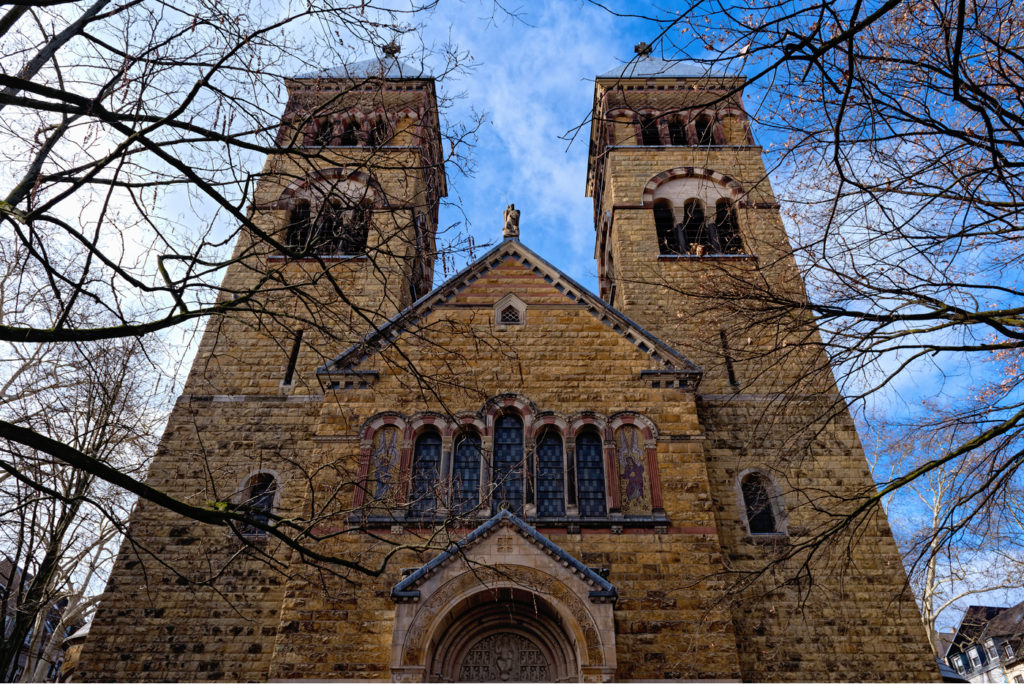
The Belgian Quarter
Cologne has its own distinctive neighborhoods that are a fun part of any visit. Be sure to head over to the Belgian Quarter for some shopping, as the streets are lines with all manner of boutiques and galleries, and the place is alive at night with theatres and music venues. One of the most popular spots is Brüsseler Platz, the square around Saint Michael church, where there are many restaurants and bars to choose from.
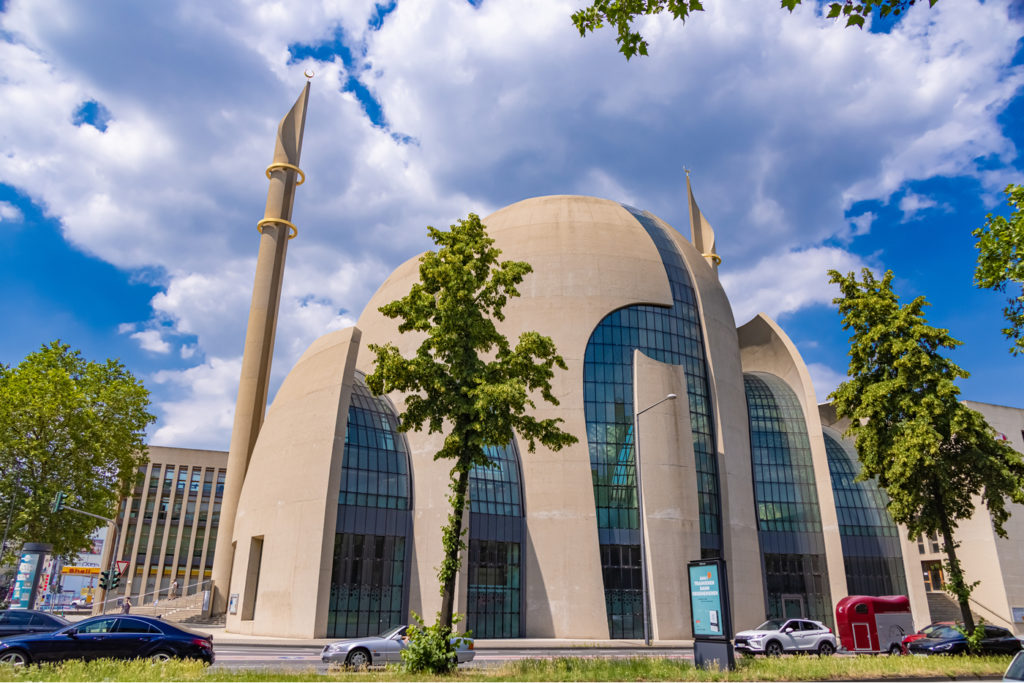
Ehrenfeld
Another contemporary district known for its street art is Ehrenfeld. This locale is just a short 10-minute train ride from Cologne’s main station. Here you’ll be struck by the murals painted on local buildings. It’s worth wandering around the neighborhood to have a look at this array of modern art colorfully filling the walls.
Another place to check out in Ehrenfeld is the Neptunbad, a 100-year-old bathhouse. You’ll be charmed by the domed pool area and rooftop saunas. Be aware that clothing is banned, and most people wear a robe or towel before getting into the heated pools or the sauna!
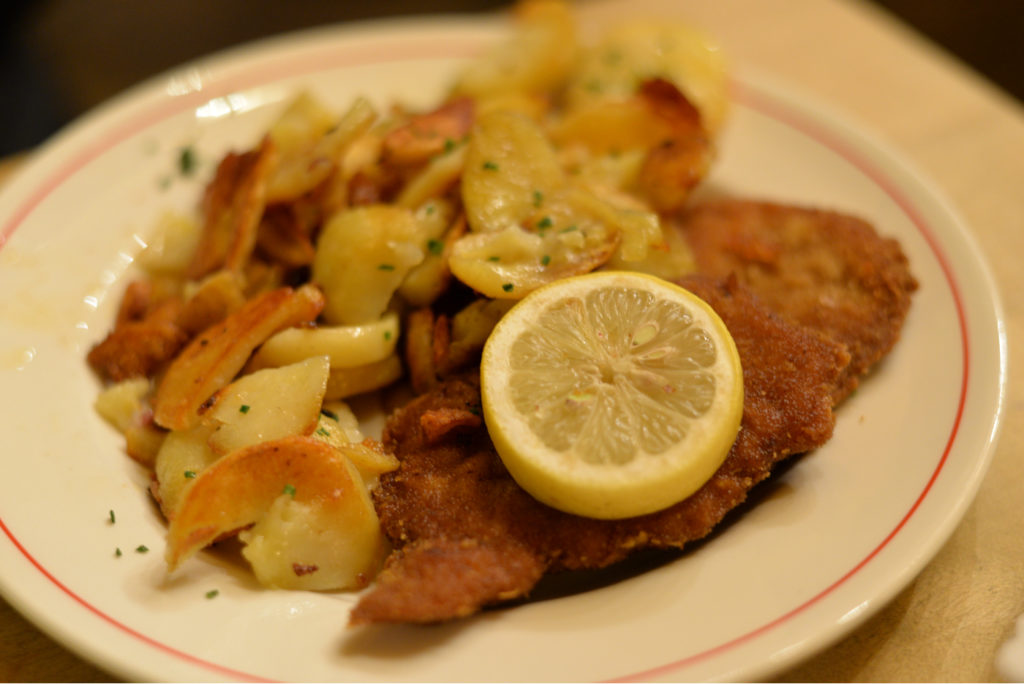
Enjoy Cologne’s Plentiful Food and Drink
Cologne has its own food specialties that you should make a point of trying. There is Leberwurst, which is a liver sausage, the famed breaded Schnitzels, and Schweinshaxen which is a crispy pork knuckle. Then there’s the local sandwich known as the Halve Hahn which means ‘half a rooster’ but contains nothing of the sort. It consists of a soft, dark rye bread roll with a large piece of gouda cheese, combined with sliced onions and mustard.
Some of the other food specialties of Cologne are chocolate and mustard. These two products even have their own museums to learn more about them.
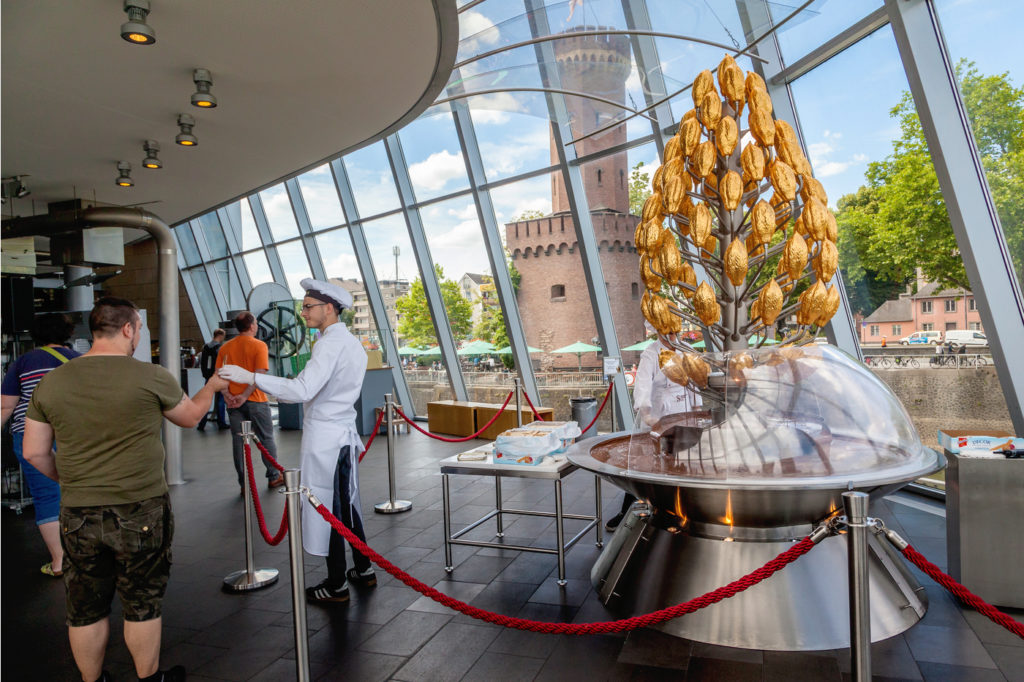
Lindt Chocolate Museum
The Lindt chocolate museum stems from a lifelong dream of chocolatier Hans Imhoff, who wanted to create a chocolate museum that had a fountain of chocolate. The museum opened in 1993 and is one of the most visited places in Cologne!
Here you will learn about the history of chocolate. The museum has a working production line where you can see the chocolate-making process in detail. There are guided tours available, and you can even participate in a workshop to design and create your own chocolate bar to take with you. There’s a Tropicarium with cacao trees so you can see what the chocolate pods look like, and the impressive chocolate fountain that stands nearly 10 feet high. And best of all, there are free samples!
The admission fee is 13.50 euros for adults.
Mustard Museum
In this land of savory sausages, mustard is a very important condiment. The Germans love mustard, and you’ll find this spicy version sitting on the tables of local pubs, restaurants and brewhouses. The Mustard Museum is located on the site of a 200-year-old mustard mill. Here you can learn all about the production of mustard, plus buy some products to take home with you.
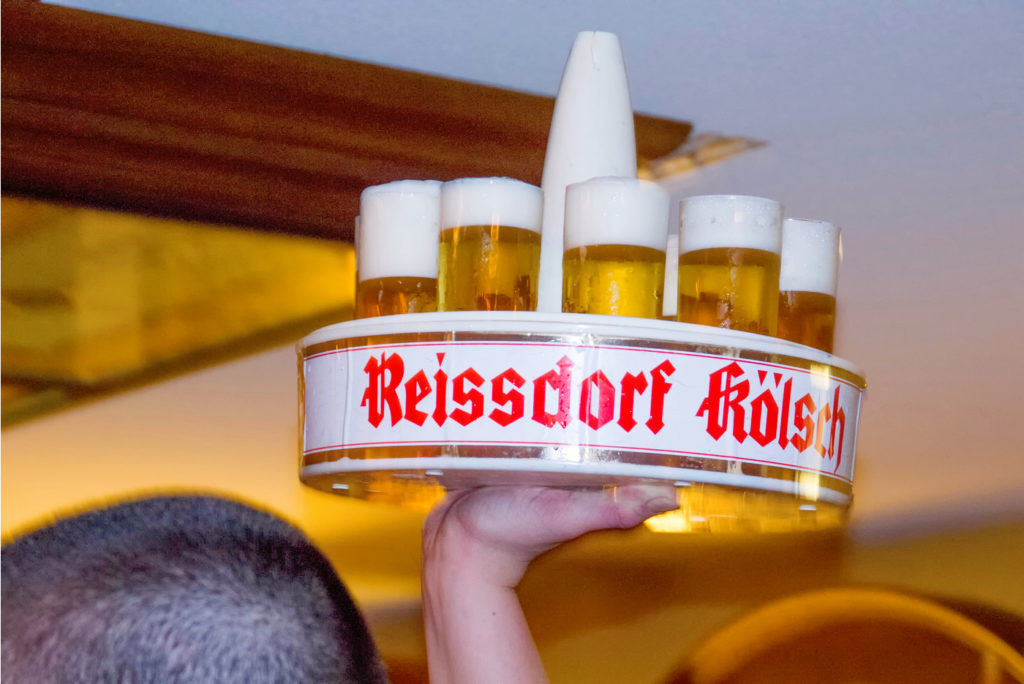
Raise a Glass of Kölsch
Of course, beer is an important drink in Germany. But here in Cologne, they have their own version, a pale-yellow local beer called Kölsch. Kölsch is served in small glasses that are tall and cylindrical. And of course, there are many places to try out this brew, including in the atmospheric pubs or kneipe in the Old Town. Once you’ve had your fill, just place the cardboard coaster or beer deckel over the top of your empty glass!
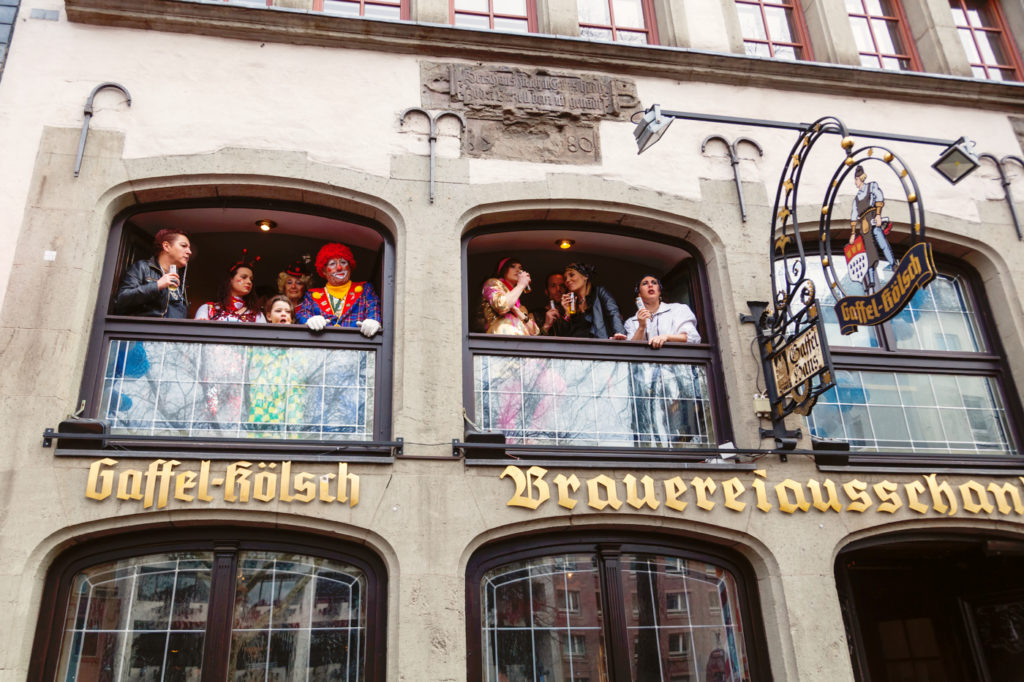
Take a Brewery Tour
Learn more about beer in Cologne with this 2-hour Brewery and Old Town tour with beer tasting, priced at $29.39 per person.
Cologne’s Special Events
You may want to time your visit to coincide with one of Cologne’s special annual celebrations, the most important occurring around the Christmas holidays and then into the New Year with Carnival. Because of Covid, these events may be impacted, so check to make sure before scheduling any visits around these colorful, fun activities.
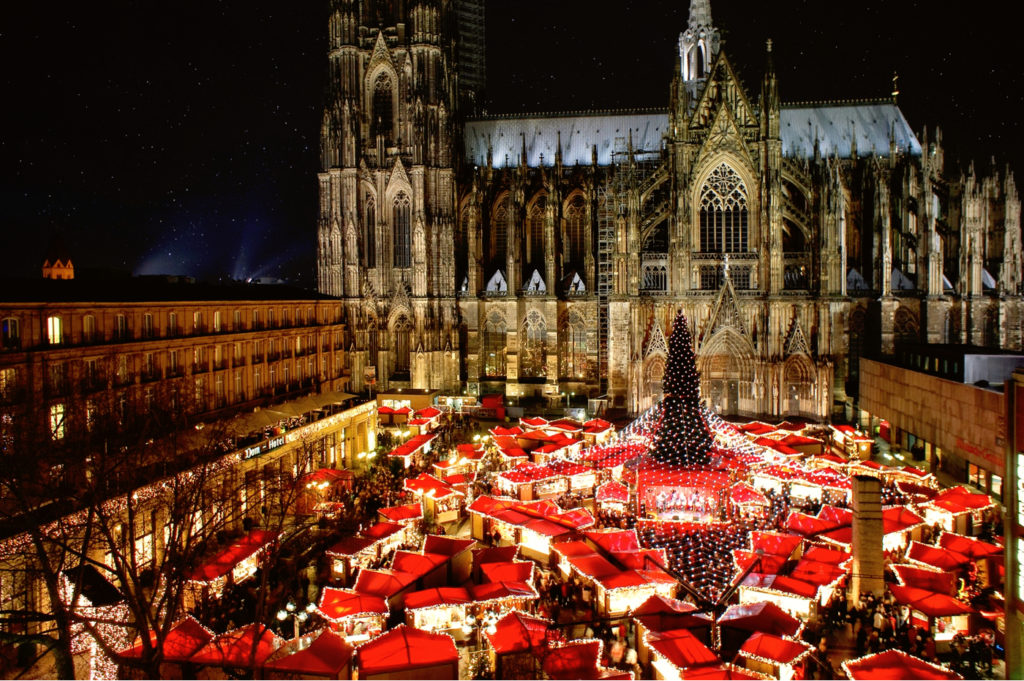
Christmas Markets
With seven Christmas markets to choose from, Cologne has some of the very best holiday markets in all of Europe. There are special holiday treats to enjoy such as a warming glass of gluhwein (a mulled or spiced red wine named for the warm glow it gives you) or a tasty apple schnitzel or gingerbread.
You’ll find these markets around the city center, including at the cathedral. You’ll be entranced by the lovely lights and decorations, and the displays in the red roofed huts with Christmas food and crafts.
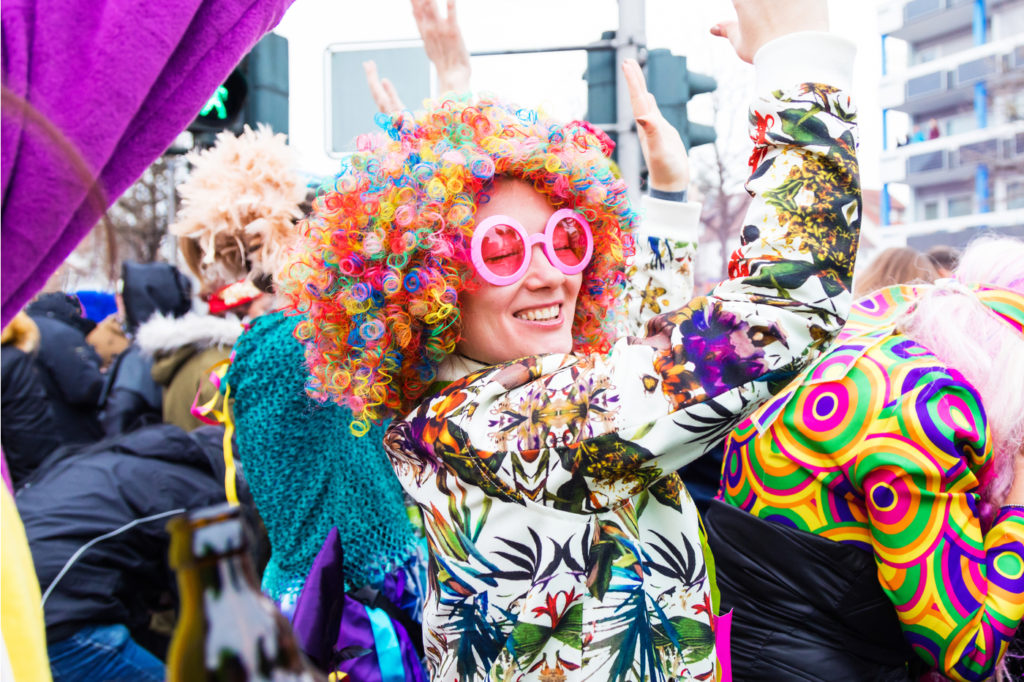
Carnival in Cologne
Cologne’s Carnival is one of the most popular annual events in Germany, with carnival season lasting from New Year’s Eve to Ash Wednesday. During this period, you’ll find parades, masked balls, and a time of general merriment.
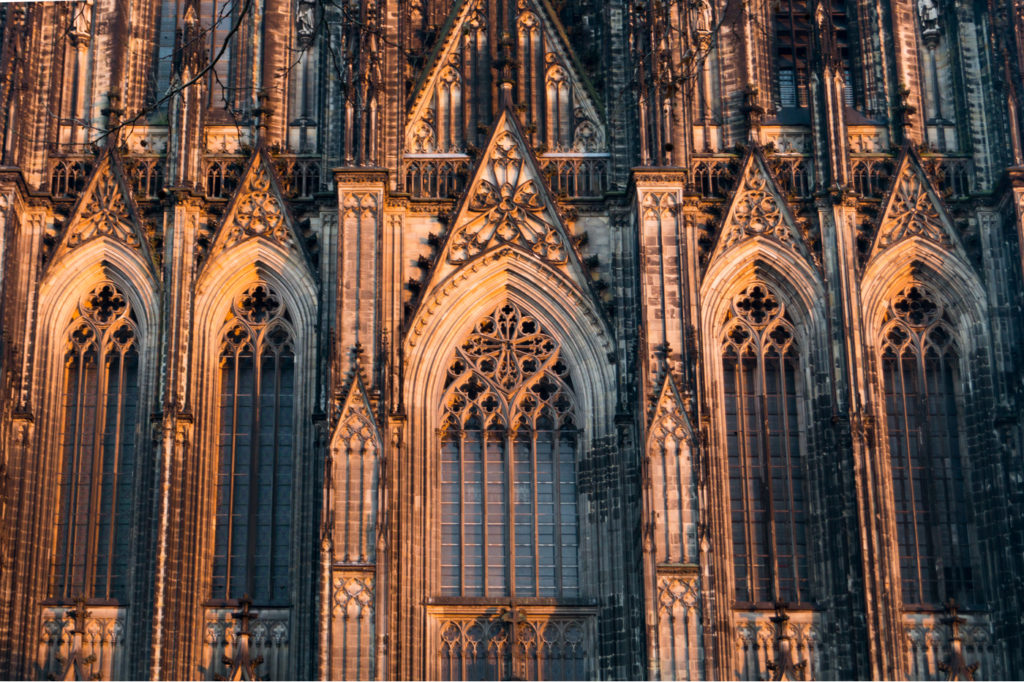
Cologne is a unique combination of historical sites and contemporary culture, a phoenix that rose from the ashes after the destruction of the WWII bombing raids. It rebuilt its destroyed Old Town and historic churches and added contemporary museums and architecture to its eclectic mix. You’ll admire the attention to detail the city gave to rebuilding its historic structures, which lend an atmospheric atmosphere in the central Old Town.
Apart from its stunning Cathedral, which is a highlight of any visit, the city offers up much more of interest, including its dynamic cultural scene with museum collections like the old masters at the Wallraf-Richartz, modern art at the Museum Ludwig which any Picasso lover shouldn’t miss, and the intriguing look at Cologne’s Roman roots at the Roman-Germanic Museum.
Take advantage of Cologne’s setting along the Rhine to add a boat trip to your list of activities. Not only does it give your feet a break, but it also provides a relaxing way to take in the city’s skyline panorama and mix of old and new architecture. If you are ok with heights, have a seat in the gondola of the Rhine cable car and get whisked over the river for more great birds eye views.
Although it may not have the story book aspect of other cities in Germany, its combination of modern and old, the majesty of its impressive cathedral, plus entertaining districts like the Belgian Quarter and the fun and beauty of its special celebrations like Carnival and its Christmas markets make it an enjoyable city to add to any German travel itinerary.
Related Articles on Germany
🇩🇪 The Cost of Travel in Germany: A 2023 Budget Breakdown
🌈 15 Best Things to Do in Berlin, Germany
🏰 The Absolute Best Things to Do in Munich, Germany
🌭 23 Things to Do in Frankfurt, Germany
💣 Exploring a Berlin Air Raid Shelter as a New Zealander

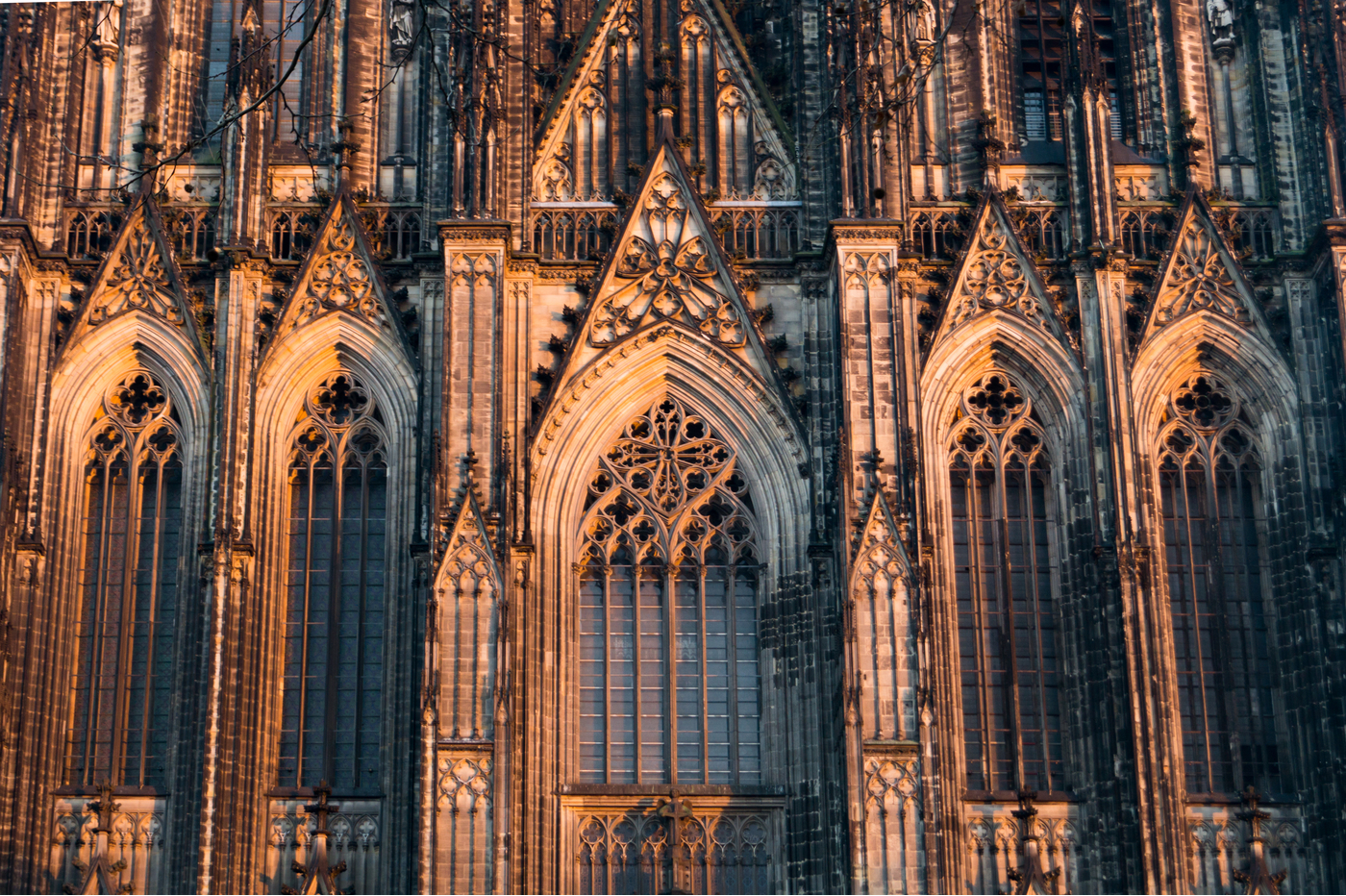
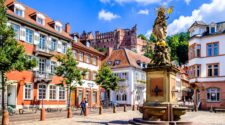
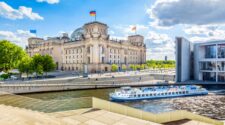
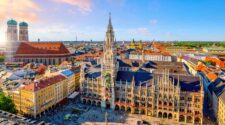
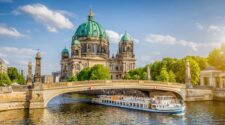


Thanks. I have a question for you. I’m planning a weekend trip to Cologne soon, and I’m wondering if you have any suggestions for hidden gems or lesser-known attractions that are worth exploring? Also, what would you recommend as the best local dishes to try while I’m there? So excited to get there!